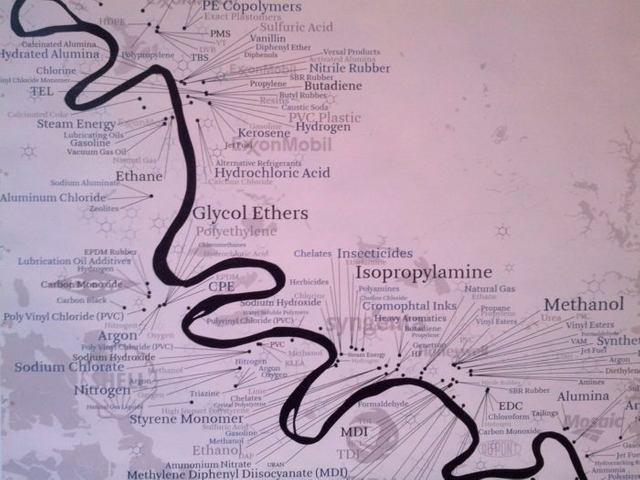The Mississippi River Delta is a veritable bread basket for much of the civilization outside the crapitalust consumer economy.
Until the crapitalusts came and screwed things up, this river was doing just fine.
Let's re-wild the area.
Coastal Louisiana is home to 41% of the United States coastal wetlands and is the world’s seventh largest delta ecosystem. The region is covered with natural levees, barrier islands, forested wetlands, and marshes formed by Mississippi River deposits. Historically the state’s wetlands provided protective barriers for diverse coastal communities against hurricanes and extreme storms, while also serving as important ecological deterrents to climate breakdown through carbon sequestration.
Currently, Louisiana has one of the fastest rates of coastal land loss and relative sea-level rise on the planet, twice the global rate. [1]
This sustained destruction of coastal Louisiana began with the colonization process- separating water from arable land- and it is bound up with the accumulated, appropriation of land, energy, and unpaid labor by fossil-fuel industries.
Capitalism is exhausting the carrying capacity of this wetlands region due to its role as an extraction zone.
Cumulative development is degrading the ecosystem itself and its ability to protect from accelerating climate disasters.
We must determine an effective means to protect this region, both to regenerate the coast and protect the communities that call it home.
90% of the coastal Louisiana wetlands are considered to be “under threat” given the direction of development within the state of Louisiana.
Measuring that in terms of land loss, 70% stems from the effects of industrial growth.
Oil and gas industrial production leads to the construction of dikes, levees, and damming of the Mississippi river for extraction and shipping, other sectors supported by these expansions include both industrial agriculture and logging.
The extensive man-made system prevents sediment and silt from reaching the Delta, obstructing the land from building itself up and replenishing the ecosystem cycles.
This deteriorating land is caused primarily by erosion, by submergence in which wetlands sink and the sea levels rise, and by the direct removal of land.
Direct removal of land occurs through a combination of dredged canals for navigation and pipeline construction, oil drilling, deforestation, agricultural drainage, and hurricanes.
The coastal process of subsidence, in which organic sediments are deposited and consolidated in the Delta forming new land, is interrupted.
The rates of land loss are significantly higher near oil and gas production fields. [2]

